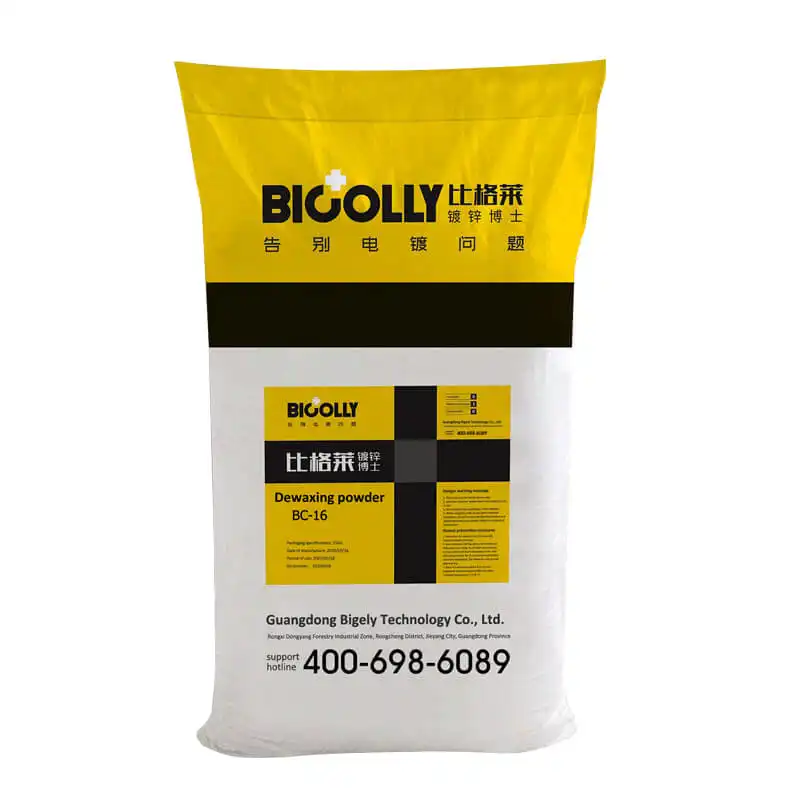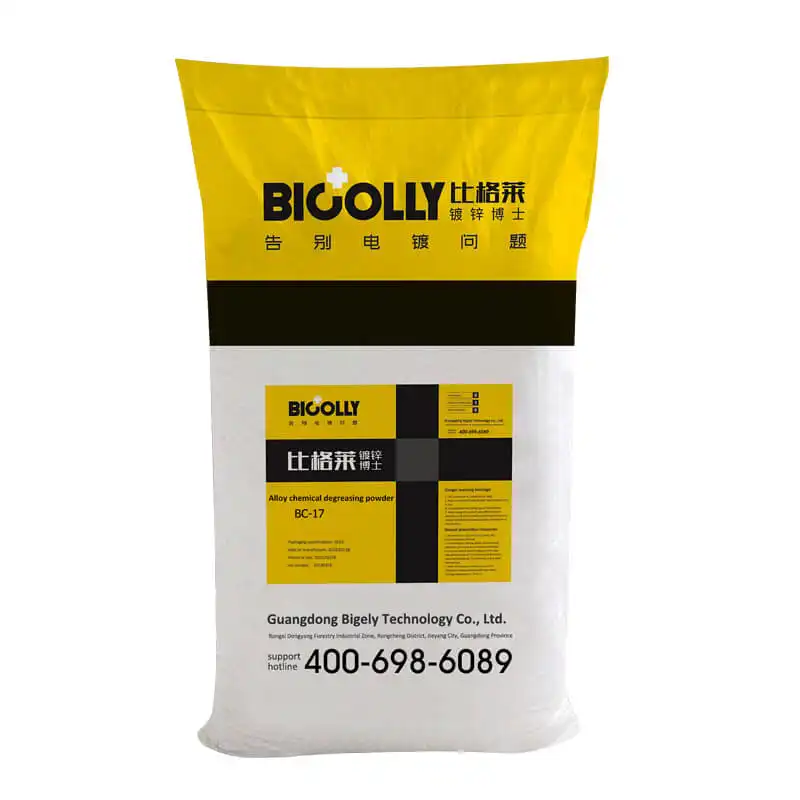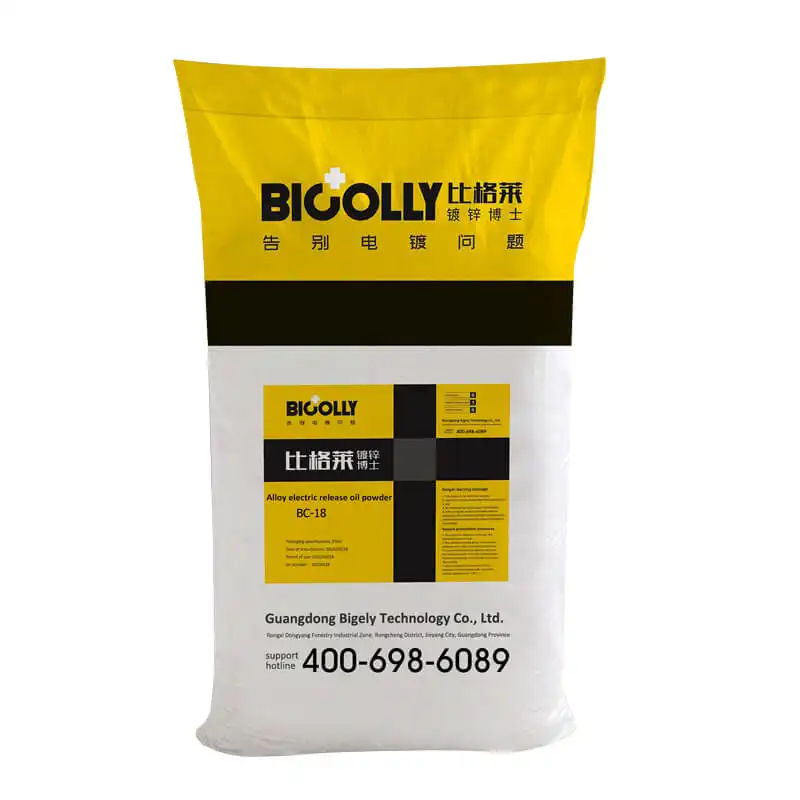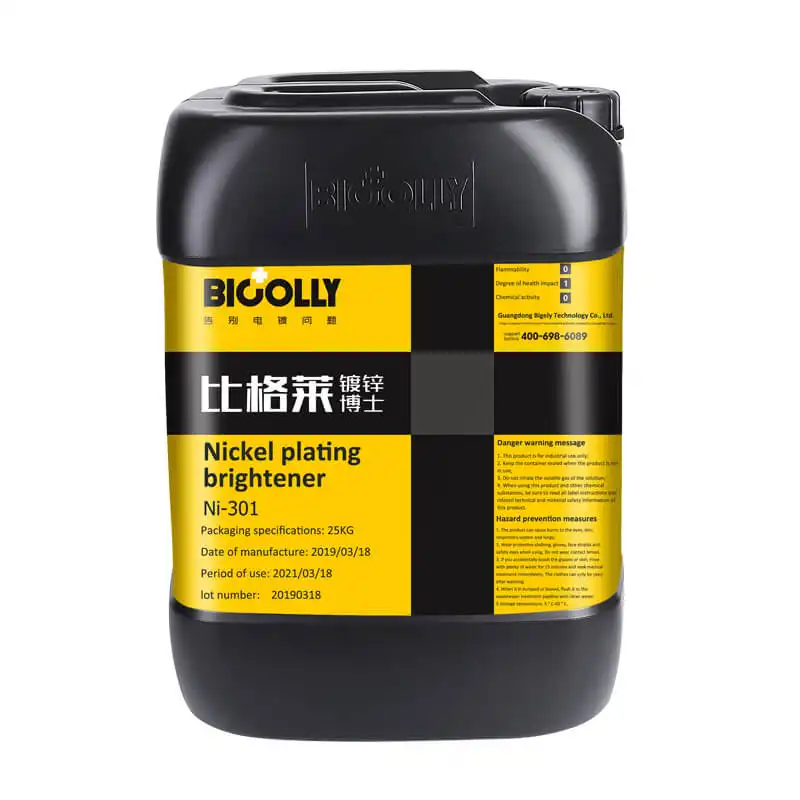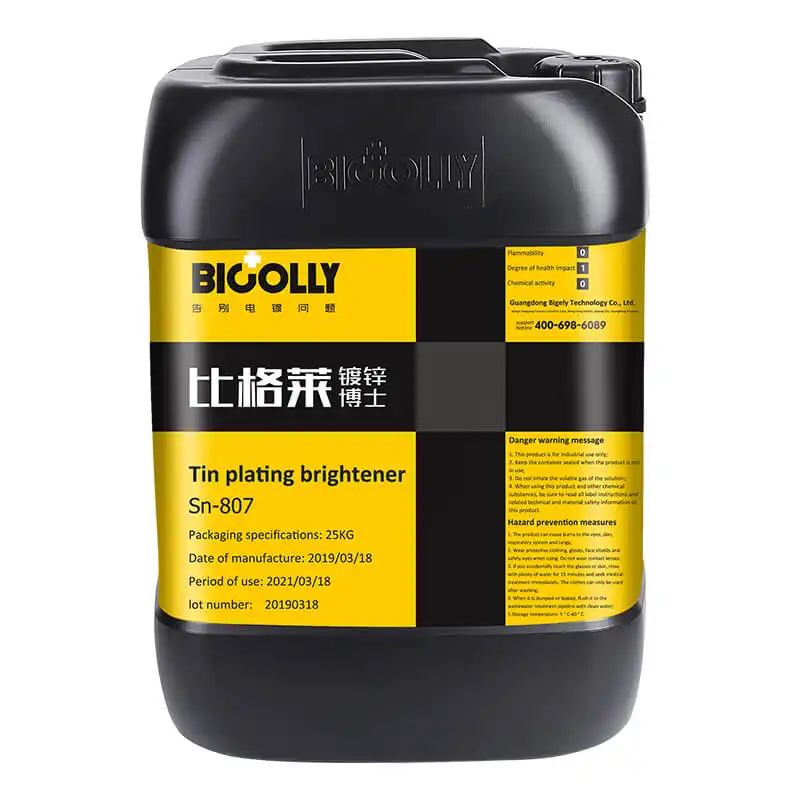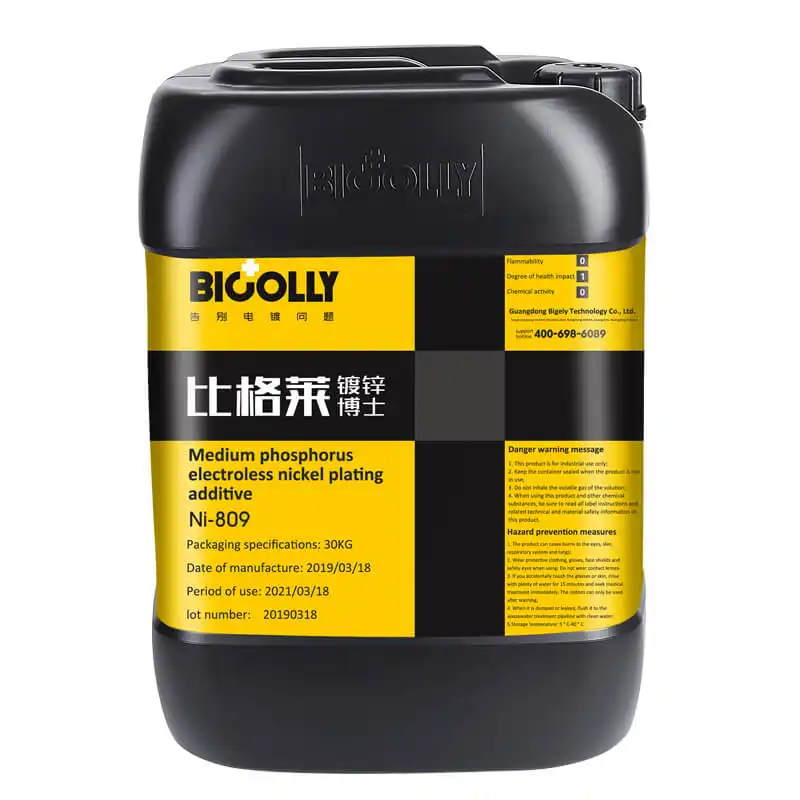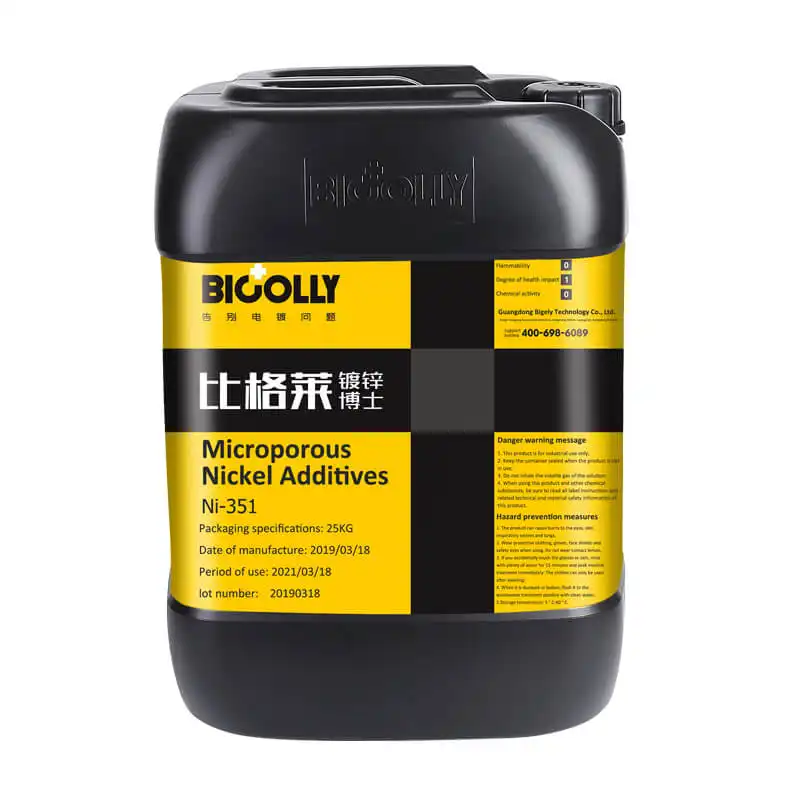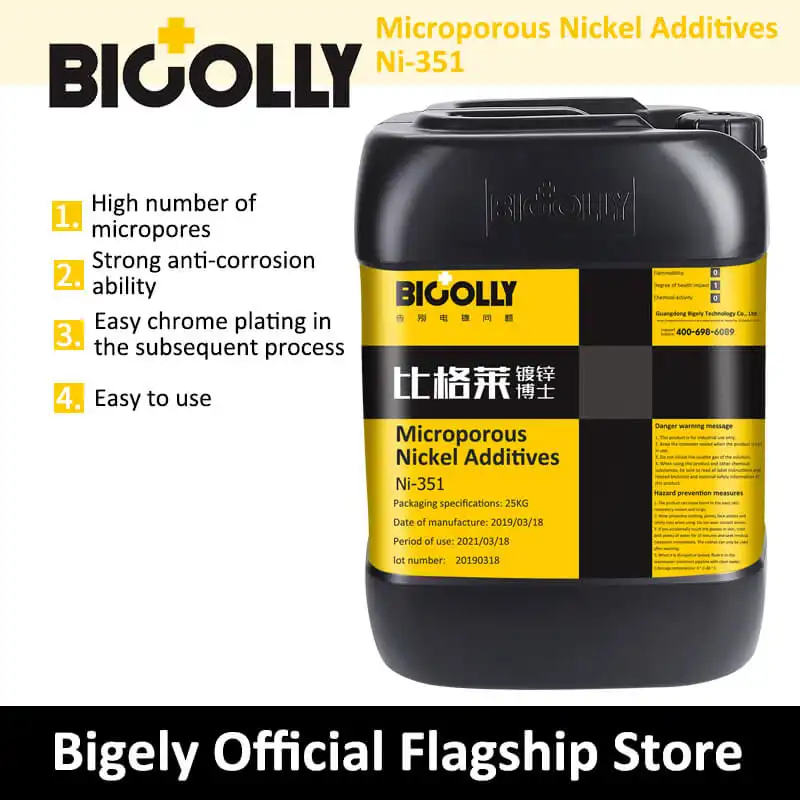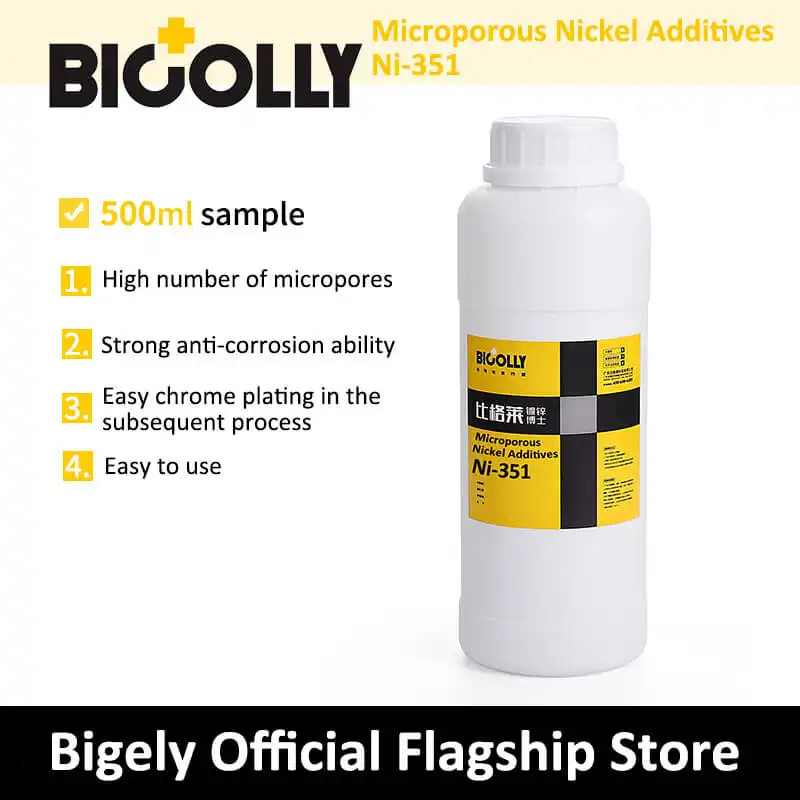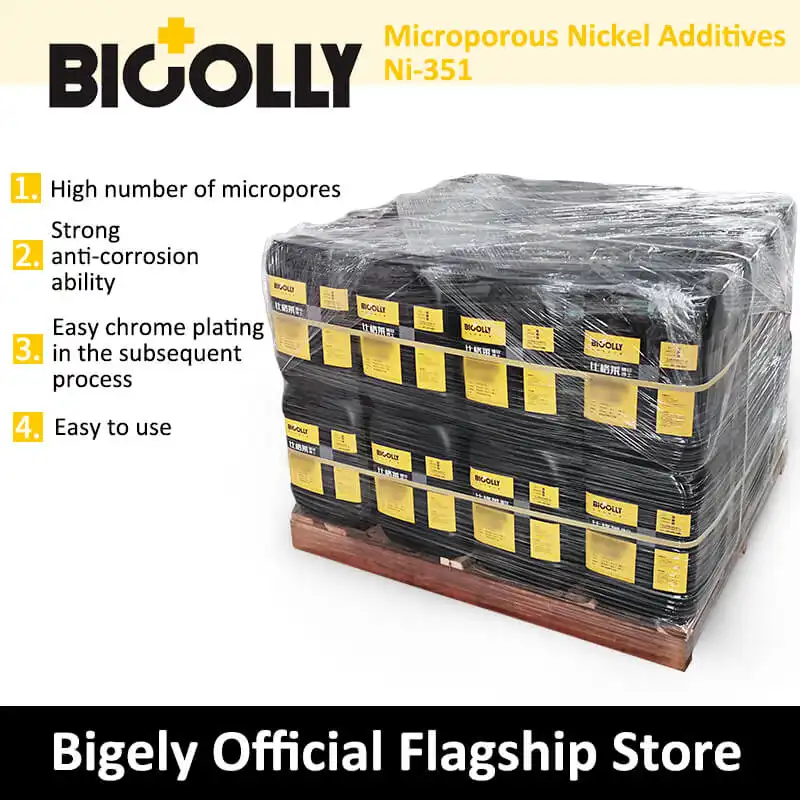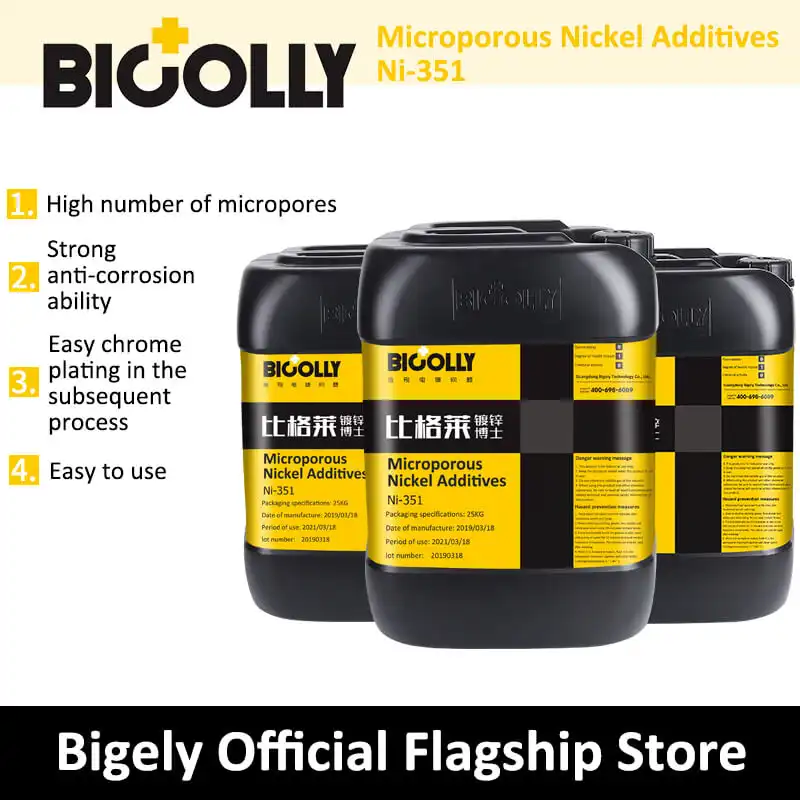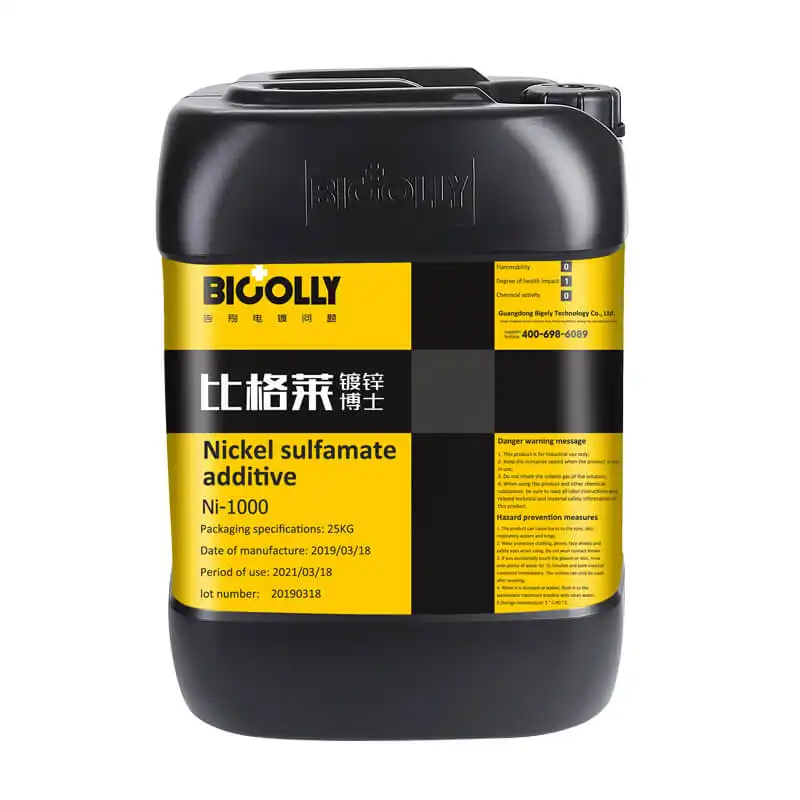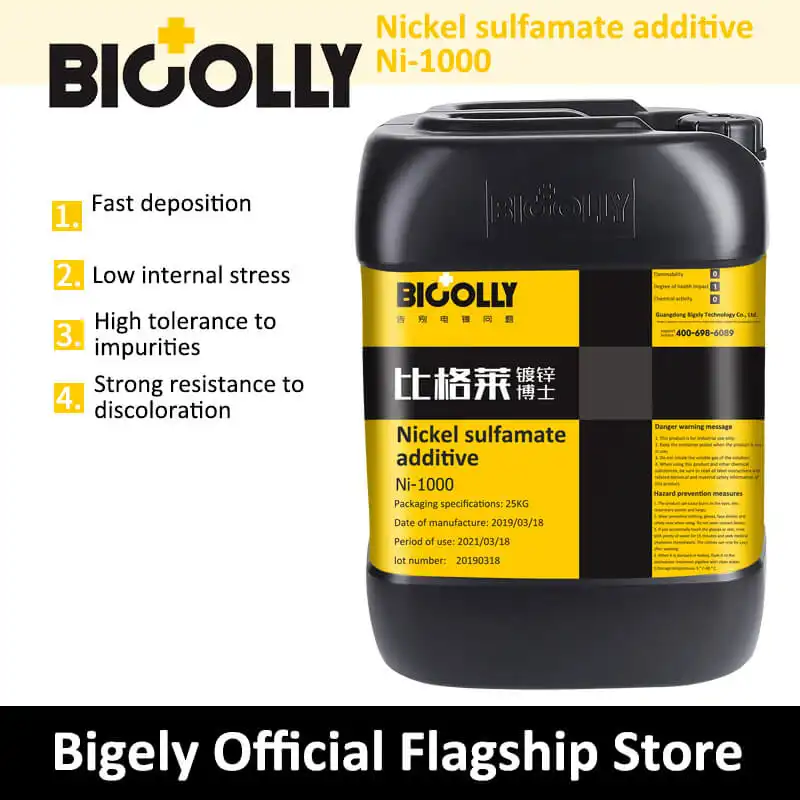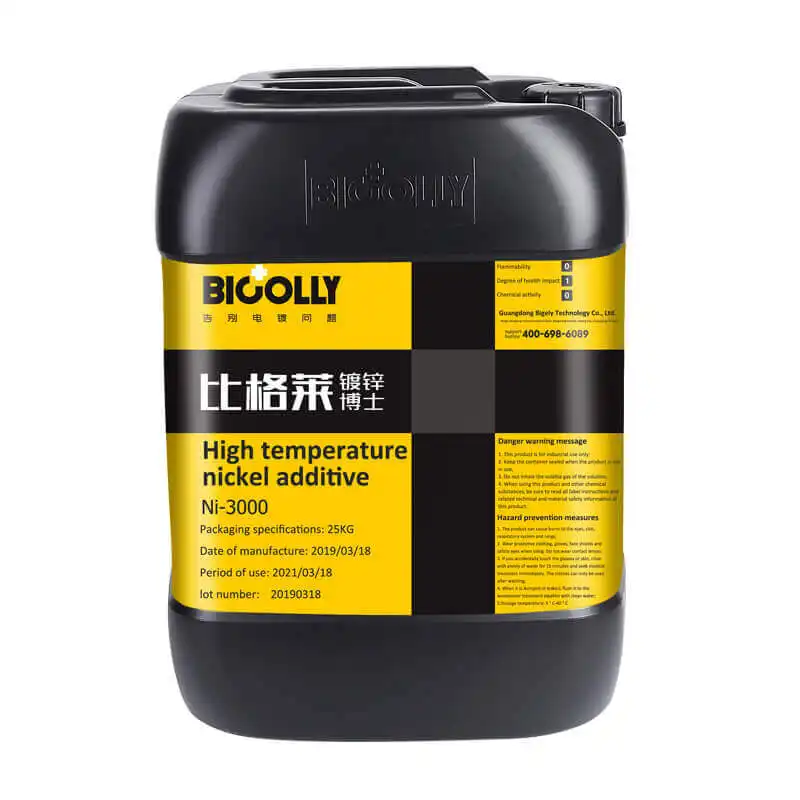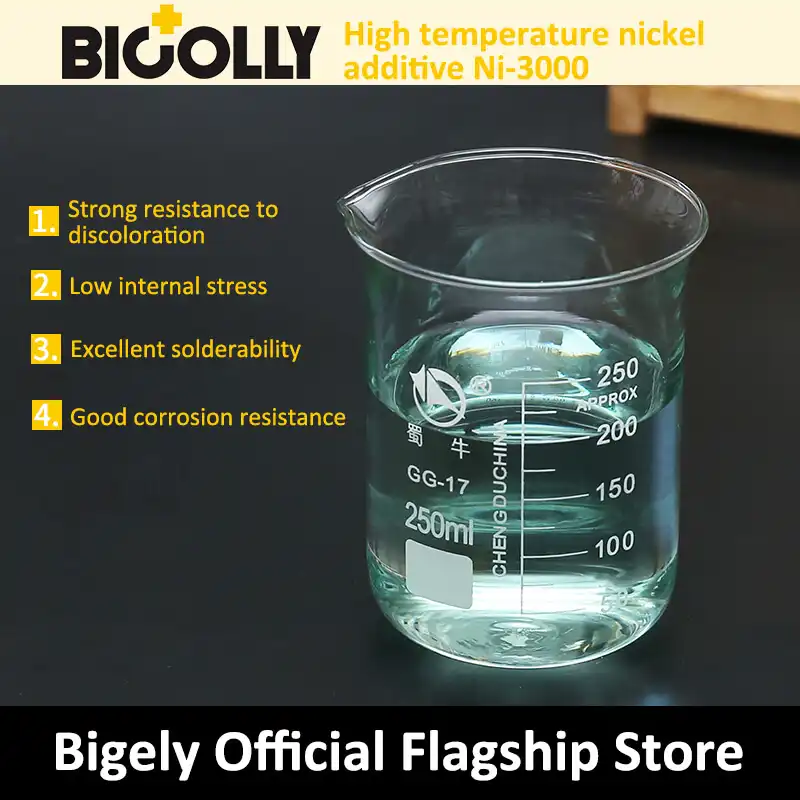Pearl nickel additives
Ni-351 nickel sealing additive
(1) Features :
1. Especially suitable for multi-layer nickel plating process with strict anti-corrosion performance.
2. Contain an amount of conductive particulate additive is not uniformly distributed on the bright nickel layer, ( . 3 million or more pores / cm), so that the chromium layer is formed on the porous chromium, thereby improving the corrosion resistance.
3. The plating solution has high stability, long treatment cycle, simple operation, and can greatly reduce the thickness of the coating under the same corrosion performance requirements.
(2) Solution composition and operating specifications
|
Nickel Sulfate |
300 g / l |
|
Nickel chloride |
40 g / l (or sodium chloride 17 g / l) |
|
Boric acid |
40 g / l |
|
Brightener Ni-351 A |
5-6 ml / liter |
|
Softener Ni-351 B (cylinder opening agent) |
5-6 ml / liter |
|
Dispersant Ni-351 C (opening agent) |
6-8 ml / liter |
|
Solid particles Ni-351 D |
10-15 g / l |
|
temperature |
55 ℃± 5 ℃ |
|
PH |
3.8-4.2 |
|
Cathode current density |
5 ± 1 ampere / square decimeter |
|
time |
1-3 minutes |
|
anode |
Nickel plate without anode bag |
|
Stir |
Air agitation |
|
filter |
No continuous filtration required |
(3) Solution preparation
1. Pour two-thirds of the water into the spare tank (or preliminary tank) and heat it to 66 ℃.
2. Add the required nickel sulfate and nickel chloride, stir to completely dissolve.
3. Or nickel carbonate was added 4% sodium hydroxide solution to adjust the pH ( the PH value) to 5.2 .
4. Add 2.5 ml / l of hydrogen peroxide, diluted with water prior to addition to the small number of stirring time.
5. Add 2.5 g/L of activated carbon , stir for several hours, and then let it stand overnight.
6. Use a filter pump to filter the plating solution into a clean plating tank.
7. Add the required boric acid, dissolve it with hot water, and keep the tank stirring for complete dissolution.
8. Add dilute sulfuric acid and adjust the pH value to 3.8-4.5.
9. Use a corrugated cathode and a low current density ( 0.15-0.4 ampere/dm2) for continuous electrolysis for more than 12 hours, until the low-level color of the corrugated board coating changes from dark black to light gray or white uniform.
10. After adding the above Ni-351 additives, you can start trial plating.
(4) The function of raw materials
|
Nickel Sulfate |
Nickel sulfate is the main source of nickel ions, and the metallic nickel deposited on the plated parts is reduced by nickel ions. |
||
|
Nickel chloride |
Nickel chloride provides chloride ions to help the anode dissolve, reduce anode polarization, increase the conductivity of the plating solution, and make the cathode have a higher current density, while also supplying nickel ions. |
||
|
Boron acid |
The concentration of boric acid is important for maintaining pH, uniform coating, adhesion and softness. It should not be lower than 40 grams. Boric acid is added after the end of the work day on the basis of analysis due to its consumption. |
||
(5) Solution maintenance
Microporous nickel, due to the introduction of hydroxide radicals and various impurities absorbed by solid particles, and the gradual accumulation of anode slime, will deteriorate the performance of the plating solution. Like the bright nickel plating solution, after a period of production, a major treatment is required. However, bright nickel porous nickel has its special place, microporous chrome plating of a very short ( 1-3 minutes), and therefore, if some mechanical impurities bath (diameter larger) will not be deposited on the workpiece , The formation of rough particles. On the other hand, anode bags cannot be used for microporous nickel anodes, so that solid particles can be better dispersed in the plating solution, but the chance of nickel anode mud entering the bath increases. Particles and mechanical impurities sink to the bottom of the tank, the clear liquid is drawn out, and hydrogen peroxide and activated carbon are added to the clear liquid for treatment. (Same method as bright nickel treatment) Then add various additives according to the formula amount, adjust the pH value, and then continue production. Discard the solid particles, mechanical particles and anode mud at the bottom of the tank.
Microporous nickel plating solution has the same allowable amount of impurities as bright nickel. The pollution of heavy metal impurities can also be removed by low current electrolysis.
It must be emphasized that the introduction of organic impurities will greatly reduce the density of micropores. Therefore, the raw materials for preparing a new bath must pay attention to the content of organic impurities. Unsaturated hydrocarbons, pyridines, and epoxy condensates are brought into the bright nickel plating solution as brighteners and have little effect on microporous nickel. The introduction of the wetting agent in the bright nickel does not affect the micropore density and appearance. Therefore, it can be considered to directly transition from bright nickel to microporous nickel without washing in the middle.
For units that are not in continuous production, the production will stop for a long time, and all solid particles will sink to the bottom of the tank. When production is resumed, air stirring must be carried out for about 1-2 hours, and the particles can be fully stirred before production can begin.
Proved by many manufacturers and use, the tank liquid is very stable, and it is only treated once every half a year, and there are few failures .
After testing and accumulating experience in the production practice of multiple factories , the consumption of various additives is as follows:
|
Ni-351 A |
Right amount |
|
Ni-351 B |
Right amount |
|
Ni-351 C (additive) |
400-500 ml / kA per hour |
|
Ni-351 D |
200-300 ml / kA per hour |
As long as the above consumption is supplemented, the appearance of the coating and sufficient particle density can be guaranteed.
(6) Safety warning:
Bigley recommends that you read the material safety information of this product before using this product. The material safety data sheet can be obtained from the company.
(7) Purchasing information
|
product name |
product code |
package |
|
Microporous Nickel Tim additives |
Ni-351 A |
20 kg |
|
Ni-351 B |
20 kg |
|
|
Ni -351 C |
20 kg |
|
|
Ni-351D |
5kg |
 Products
Products